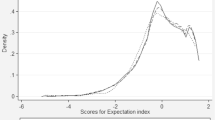Abstract
Lengthening school attendance is increasingly transforming youngsters from full time-full year to part time-part year workers. Relative labor market earnings are thus declining at the same time that the expenses associated with being a youth are increasing. The result is a decline in economic autonomy and a lengthening of the period of economic adolescence. Elongated school attendance together with the explosion in the number of teenagers during the late 1950s and 1960s has created a vast supply of young workers hunting part-time and part-year jobs. Teenage unemployment has consequently risen quite sharply. An erosion of the work ethic does not appear to be the culprit in low teenage labor-force participation and high teenage unemployment. The elimination of teenage jobs by automation is not responsible either. Teenage employment has been rising rapidly but has been outpaced by supply growth. The teenage labor-market situation should improve in the future as the growth of the teenage population decelerates.
Similar content being viewed by others
References
Bancroft, G., and Garfinkle, S. (1961).Job Mobility in 1961, U.S. Department of Labor, Bureau of Labor Statistics, Special Labor Force Report No. 35.
Folk, H. (1968). The problem of youth unemployment. InThe Transition from School to Work, report based on the Princeton Manpower Symposium.
Manpower Report of the President (1972).
Parnes, H. S., Miljus, R. C., Spitz, R. S., and Associates (1969).Career Thresholds: A Longitudinal Study of the Education and Labor Market Experience of Male Youth, Vol. 1, The Ohio State University, Columbus, Ohio.
U.S. Department of Commerce, Bureau of the Census (1970).Consumer Income, Current Population Reports, Government Printing Office, Washington, D.C.
Zeller, F. A., Shea, J. R., Kohen, A. I., and Meyer, J. A. (1970).Career Thresholds: A Longitudinal Study of the Education and Labor Market Experience of Male Youth, Vol. 2, The Ohio State University, Columbus, Ohio.
Author information
Authors and Affiliations
Additional information
Received B.S. and M.A. in economics from Washington University (1951) and Ph.D. in economics from M.I.T. (1964). Has served on the staff of the Board of Governors of the Federal Reserve System and of the President's Council of Economic Advisors. Professor of Economics and Chairman of the Department at Washington University. Has written extensively on technical change, on unemployment, and on labor market problems of youth (“Teenagers and the labor market, “Annual Proceedings of the American Statistical Association, 1968; “Determinants of teenage employment,”Journal of Human Resources, Winter 1969; and theYouth Labor Market, University of Michigan Policy Papers in Human Resources and Industrial Relations No. 12, (1969). Author of a forthcoming book onLabor Markets and Unemployment.
Rights and permissions
About this article
Cite this article
Kalachek, E. The changing economic status of the young. J Youth Adolescence 2, 125–132 (1973). https://doi.org/10.1007/BF02214089
Received:
Issue Date:
DOI: https://doi.org/10.1007/BF02214089




